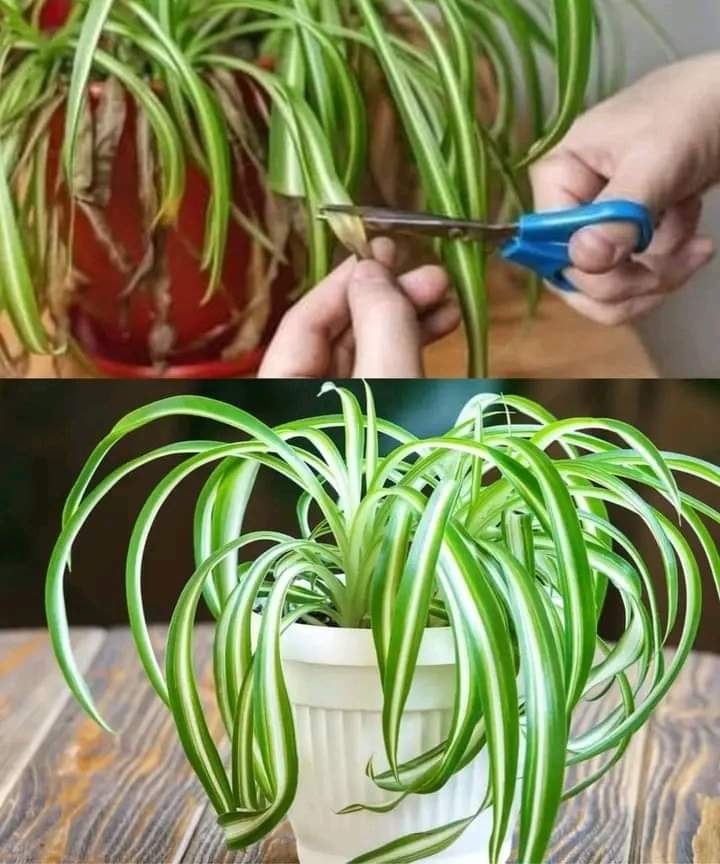The spider plant (Phalangium) is a beloved houseplant known for its graceful appearance, air-purifying properties, and ease of care. Whether you’re a seasoned plant parent or a beginner, this guide will show you how to nurture this stunning plant while enjoying the benefits of cleaner, healthier indoor air.
Why Choose a Spider Plant?
Graceful Appearance
With its long, arching leaves striped in shades of green and white, the spider plant adds a touch of elegance to any room.
Air Purification Power
Spider plants are champions of indoor air quality. They effectively filter harmful toxins such as formaldehyde, benzene, and carbon monoxide, making your home healthier and more breathable.
Low-Maintenance and Resilient
Perfect for plant enthusiasts of all levels, spider plants thrive with minimal attention. They’re forgiving of occasional neglect and bounce back quickly when cared for properly.
Effortless Propagation
One of the most delightful features of spider plants is their ability to produce baby “spiderettes” or offshoots. These can be propagated to grow new plants effortlessly, making it a gift that keeps giving.
Spider Plant Essentials
Lighting
Best Conditions: Bright, indirect sunlight is ideal. Position your spider plant near an east- or west-facing window.
Tolerances: While they tolerate low light, growth may slow, and their vibrant variegation may fade.
Avoid: Direct sunlight, which can scorch the leaves.
Watering
Frequency: Keep the soil evenly moist during spring and summer.
Seasonal Adjustments: Reduce watering in fall and winter, allowing the soil to dry out slightly between waterings.
Signs of Overwatering: Yellowing leaves and root rot.
Soil and Potting
Type: Use a well-draining, nutrient-rich potting mix.
Container: Pots with drainage holes are essential to prevent water accumulation.
Temperature and Humidity
Ideal Range: Average indoor temperatures (60-75°F or 16-24°C) are perfect.
Humidity: While they adapt to normal household humidity, spider plants appreciate occasional misting in dry environments.
Fertilization
Feeding: Apply a balanced liquid fertilizer every 2-4 weeks during the growing season (spring and summer).
Caution: Over-fertilizing can cause leaf tips to brown.
Troubleshooting Common Spider Plant Issues
Brown Leaf Tips
Causes: Over-fertilization, fluoride in tap water, or low humidity.
Solution: Use distilled or rainwater, reduce fertilizer, and mist leaves regularly.
Yellow Leaves
Causes: Overwatering or underwatering.
Solution: Check soil moisture and adjust watering habits accordingly.
- Slow Growth
Causes: Insufficient light or poor soil.
Solution: Move to a brighter location and repot with fresh soil if necessary.
- Pests
Common Culprits: Spider mites, aphids, and mealybugs.
Solution: Wipe leaves with a damp cloth, use insecticidal soap, or rinse the plant under running water.
Pruning and Propagation
Pruning
Trim yellow or brown leaves to maintain a healthy, tidy appearance.
Remove spent spiderettes to encourage new growth.
Propagation
Identify Spiderettes: Look for baby plants dangling from the mother plant.
Detach: Snip spiderettes with clean scissors or leave them attached to the mother plant until roots develop.
Potting: Place in water or soil, ensuring roots are well-covered.
Wait: Watch them grow into full-sized spider plants!
Display Ideas for Spider Plants
- Hanging Baskets
Spider plants shine in hanging baskets, where their arching leaves and spiderettes can cascade gracefully.
- Mixed Plant Arrangements
Pair spider plants with other houseplants like pothos or peace lilies for an aesthetically pleasing indoor garden.
- Terrariums
For a creative twist, include spider plants in open terrariums or mini gardens.
- Office Decor
Compact spider plants brighten up desks and improve air quality in your workspace.
Reviving a Dying Spider Plant
If your spider plant is struggling, follow these steps:
Assess the Roots: Check for root rot or overcrowding. Repot if necessary.
Improve Watering Habits: Adjust frequency and use filtered or distilled water.
Relocate: Place in bright, indirect light for optimal growth.
Feed Lightly: Use a diluted fertilizer during the growing season.
Spider Plants and Health Benefits
Beyond their aesthetic appeal, spider plants are proven to reduce indoor air pollutants, increase humidity, and even reduce stress levels. They’re a natural air freshener that brings life and vibrancy to any space.
Final Thoughts
Spider plants are not only elegant and low-maintenance but also incredible natural air purifiers. With proper care, these hardy plants can thrive for years, brightening your home and offering health benefits. Start growing your spider plant today and experience the joy of cultivating green vitality indoors!
